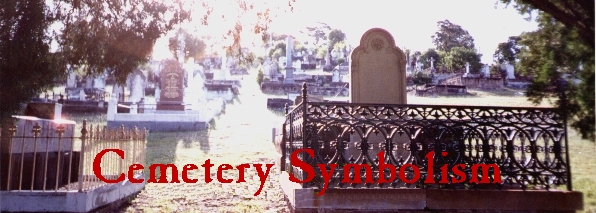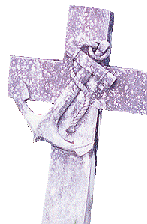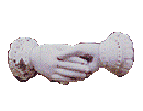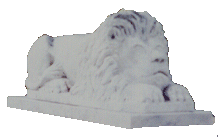

When venturing into cemeteries, a whole world of symbolism awaits. Many years ago, the world of cemetery symbolism was vast and complex. All these symbols are based on death and dying, and the passage of the soul unto God. The symbolism seems to be universal between the different religions, with each individual symbol representing the God of that persuasion, not just that of the Christian religion. However, in more modern times, the study of these symbols must be carried out with care, as the grave designs may be no more than a fashionable emblem of the times. It is a study fraught with confusion and inaccuracy. In many circumstances it is difficult to discern which symbols have been chosen for their actual given message, and which have been chosen for their pleasing appeal to the eye. However, it still remains that at various points in time symbolism has been used within cemeteries as a means of portraying a message of the people who have passed from this world to the next. But what messages can these symbols provide us?
These symbols tell the onlooker of the professions these people held, and also the sacrifices these individuals made to their country. The graves are singled out from the other more generic, mass-produced tombstones by their specifically 'individual' symbolic designs. This is an attempt to tell the still living world of the lives of these individuals, letting the community know of their contributions to society long after they have departed. It also provides the onlooker with knowledge of activities that were dear to that particular deceased person. The social implications of these tombstone designs are many and varied. They are a marker, or representative figurehead for the person who has died. The symbolism they exhibit provides cryptic clues to those passing by - "Here lies (?) Who achieved (?) during their life, who was also passionate about (?)". This monumental symbolism can be studied not only in respect to the life and time of the deceased person, but it provides an insight to the past, with signs and trends of the time found carved on tombstones. The epitaph created for the deceased person tries to sum up the departed soul's achievements in life, but the gravestone symbolism can provide further and more detailed information about that person.
Below is a basic list of the more commonly seen cemetery symbolism...
 ANCHOR:
The more obvious significance of the anchor is for the deceased person
leaving a seafaring profession. However, this symbol when found inland
may carry with it different meanings. The anchor is also seen as a sign
of hope and eternal life. It is seen as an object that stops us from drifting
away from God and becoming lost. Toowong Cemetery contains many anchors,
appearing on both Christian crosses and pillars.
ANCHOR:
The more obvious significance of the anchor is for the deceased person
leaving a seafaring profession. However, this symbol when found inland
may carry with it different meanings. The anchor is also seen as a sign
of hope and eternal life. It is seen as an object that stops us from drifting
away from God and becoming lost. Toowong Cemetery contains many anchors,
appearing on both Christian crosses and pillars.
 BROKEN
COLUMN: These represent sorrow, or a life that has been broken
or cut short by death. Another interesting definition is that of the Greek/Roman
civilisation, where pillars that were once brilliant and beautiful in the
past are now in a state of collapse. These broken pillars represent the
eventual ruin and decomposition of life. Everything that exists now will
eventually crumble as time and the elements continue unabated. Complete
pillars are sometimes seen, representing the gates of heaven.
BROKEN
COLUMN: These represent sorrow, or a life that has been broken
or cut short by death. Another interesting definition is that of the Greek/Roman
civilisation, where pillars that were once brilliant and beautiful in the
past are now in a state of collapse. These broken pillars represent the
eventual ruin and decomposition of life. Everything that exists now will
eventually crumble as time and the elements continue unabated. Complete
pillars are sometimes seen, representing the gates of heaven.
 CROWN:
The crown is a sign of victory, triumph (possibly in life), and glory for
all to behold. It is also a sign of righteousness and a symbol of resurrection.
This may date back to the crucifixion of Christ, who was put to death on
the cross wearing a crown of thorns, only to be resurrected again soon
after. It may also be a symbol of the sun, in turn a symbol for God.
CROWN:
The crown is a sign of victory, triumph (possibly in life), and glory for
all to behold. It is also a sign of righteousness and a symbol of resurrection.
This may date back to the crucifixion of Christ, who was put to death on
the cross wearing a crown of thorns, only to be resurrected again soon
after. It may also be a symbol of the sun, in turn a symbol for God.
 DOVE:
Most commonly an object of peace, carrying this message through the various
countries of the world. It is a symbol of innocence, purity and spirituality.
This innocence and purity is derived from the dove's colour, which is commonly
white. Many religions believe the dove represents the messenger of God,
collecting the souls of the departed and carrying them upward to heaven.
DOVE:
Most commonly an object of peace, carrying this message through the various
countries of the world. It is a symbol of innocence, purity and spirituality.
This innocence and purity is derived from the dove's colour, which is commonly
white. Many religions believe the dove represents the messenger of God,
collecting the souls of the departed and carrying them upward to heaven.
 HANDS:
The most common version of the 'Hands' symbol found in cemeteries is that
of the 'Handshake'. Hands appeared in many other forms, such as praying,
holding various items and pointing but the handshake is by far the most
common. The hand is seen as an important symbol of life…we tend to use
our hands every day for numerous tasks. Clasping hands symbolise a close
bond, and represent the deceased's relationships with other human beings.
It is also a symbolic representation of saying farewell to earthly existence.
HANDS:
The most common version of the 'Hands' symbol found in cemeteries is that
of the 'Handshake'. Hands appeared in many other forms, such as praying,
holding various items and pointing but the handshake is by far the most
common. The hand is seen as an important symbol of life…we tend to use
our hands every day for numerous tasks. Clasping hands symbolise a close
bond, and represent the deceased's relationships with other human beings.
It is also a symbolic representation of saying farewell to earthly existence.
 LION:
The lion is seen as a guardian symbol, which courageously watches over
the tomb of the deceased. They also represent the courage, power, and strength
of the deceased person they have been given to watch over. All lions seen
within cemeteries are sitting atop vaults and tombs, watching over their
deceased person's final resting-place.
LION:
The lion is seen as a guardian symbol, which courageously watches over
the tomb of the deceased. They also represent the courage, power, and strength
of the deceased person they have been given to watch over. All lions seen
within cemeteries are sitting atop vaults and tombs, watching over their
deceased person's final resting-place.
 URN:
All cemeteries contains many urns carved from stone atop graves and monuments,
however a vast majority of these also show drapes covering the vessel.
Plain urns are a symbol of death, as the ashes are usually placed within
them. The draped and empty urn attests to the soul having fled the shrouded
body. Drapery over anything symbolises death, sorrow and mourning.
URN:
All cemeteries contains many urns carved from stone atop graves and monuments,
however a vast majority of these also show drapes covering the vessel.
Plain urns are a symbol of death, as the ashes are usually placed within
them. The draped and empty urn attests to the soul having fled the shrouded
body. Drapery over anything symbolises death, sorrow and mourning.